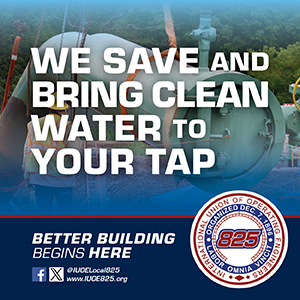
Creating Diverse and Accessible Spaces for Summer: Trends in Park and Recreation Design
Creating Diverse and Accessible Spaces for Summer: Trends in Park and Recreation Design
90% of US adults view parks and recreational facilities as an essential local government service, and providing both diversity and accessibility in these spaces is crucial to meeting the needs that drive this demand. Splash pads to cool off in the heat, inclusive playgrounds that provide recreation opportunities for all, parks, athletic facilities, amphitheaters, and open-air gathering spaces for people of all ages and abilities, architects and engineers are finding new ways to shape outdoor environments and liven up the summer months.
Designing with an eye for emerging trends and parks and recreation mainstays requires a multidisciplinary team of experts. LAN Associates’ team includes architects, landscape architects, civil engineers, land use professionals, surveyors, construction administrators, as well as mechanical, electrical, plumbing, and environmental engineers. We asked these experts what it takes to design outdoor spaces with an eye towards embracing emerging trends. Summer is here, so it’s time to go outside and play!
Creating Playgrounds That Accommodate People of All Abilities

According to a recent study, 57% of parents believe that playgrounds are required to have elements designed for children with special needs; however, this is not the case. The Americans with Disabilities Act only requires wheelchair access to the area. This is not enough to ensure a playground is inclusive.
Architects and engineers can help towns strive to exceed the minimum requirements to meet ADA accessibility standards and design play experiences that cater to a diverse range of needs and interests. Inclusive playgrounds are essential, and we encourage all clients to embrace this emerging trend.
LAN addresses the need for inclusiveness in playgrounds by designing sensory-rich, universally accessible play environments. These playgrounds feature designs that help all children develop physically and emotionally, while also honing their social skills. Features such as swings with secure seats and other adaptive equipment that accommodate various needs are essential, as is ground-level play that removes barriers to participation for children with mobility issues. The goal is to create engaging playscapes that provide the right amount of challenge to encourage all children while offering them opportunities to succeed. Safety should also be prioritized through features such as fencing, lighting, secure pathways, and soft surfacing.
Building Spaces That Help You Put on a Show

Research shows that 80% of attendees at arts and culture events agreed that the event they attended inspired a sense of pride in the neighborhood or community. Municipalities can capitalize on this statistic by creating thoughtfully designed outdoor amphitheaters that seamlessly blend natural aesthetics with functional performance spaces.
By selecting the right site and working with a qualified architect, outdoor amphitheaters can be thoughtfully integrated into the landscape. They are typically constructed with tiered seating carved into existing topography and supported by engineered earthworks. Ensuring clear sightlines and optimal acoustics is essential, and architectural elements such as stage canopies or sound-reflective surfaces can help achieve these goals. Landscape architects and civil engineers also play a crucial role in integrating native vegetation, natural pathways, and sustainable drainage systems to maintain ecological balance and achieve visual cohesion.
Making a Splash with Water-Based Play Features

When the summer heats up, there is nothing better than taking the kids to the local park to cool down with water based attractions. This sentiment is widely supported by the significant growth in splash pad construction over the past few years. Between 2017 and 2018, the number of splash pads in the 100 largest U.S. cities increased by 35%, reaching 1,797 locations. That number continued to grow to 2,056 by 2025, showing an ongoing investment in these engaging and refreshing spaces.
Designing these features requires more than creativity. Durable, soft, non-porous materials must be selected and installed for the ground, and technical expertise is needed to integrate plumbing and mechanical components that ensure safe and reliable operation. If no existing utility connections were available within the park, coordination with the relevant agencies is crucial. Drainage is also a significant concern that civil engineers can address.
Spring, Summer, or Fall, Athletic Facilities Are a Must for Encouraging Outdoor Play


High-quality athletic facilities are essential to every town and city. Whether located on school grounds or municipal land, building high-performing complexes requires a team of architects and engineers. Civil engineers are needed to assess soil conditions, manage site drainage, and ensure proper grading to prevent flooding, while architects contribute to the overall user experience by designing stands, restrooms, concession areas, and team spaces. Meanwhile, mechanical, electrical, and plumbing engineers coordinate systems such as irrigation and lighting, which are critical for supporting year-round play.
The primary goal of any team designing an athletic complex is to adopt a holistic approach, ensuring that the facility is designed to minimize maintenance requirements and maximize available playtime. This means designing a field that can withstand the weather and the demands of continuous play. For turf fields, this means having a team with expertise in selecting the right materials, and for grass fields, it involves hiring a professional to design an irrigation system.
Delivering Inclusive Outdoor Environments Through Teamwork
From large cities to small towns, it's not only essential to provide a diverse range of parks, playgrounds, athletic facilities, and other outdoor spaces, but also to ensure those facilities are accessible to people of all ages and abilities. To accomplish this, you will need to assemble a team comprising of architects, landscape architects, engineers, and environmental professionals. If these professionals are all part of an in-house team like the one at LAN Associates, together they can work with a unified purpose to help your community reimagine what your public spaces can offer when the weather heats up.
For more information about how LAN Associates can help your community reimagine its outdoor spaces, please visit www.lanassociates.com or to read the full article and learn more about our approach to inclusive and innovative outdoor design, visit https://lanassociates.com/industry-insights/celebrate-summer-with-a-look-at-trends-in-park-and-recreation-design.






